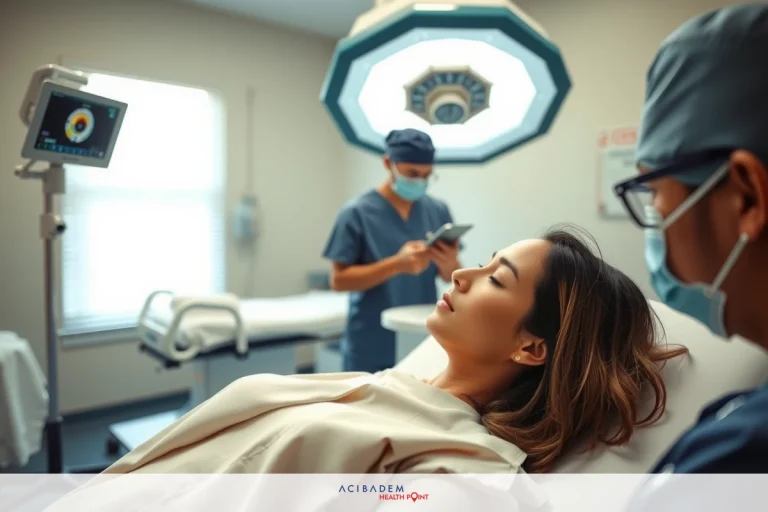Do They Put a Catheter in During Rhinoplasty?
Do They Put a Catheter in During Rhinoplasty? Rhinoplasty, the reshaping of the nose, often prompts questions about details. One such detail is catheter use during surgery – a topic that can cause anxiety for many patients. While it’s not always necessary, there are certain situations where its application becomes crucial.
The purpose and function of the catheter may seem somewhat elusive to those unfamiliar with medical procedures. It serves multiple roles in different surgeries but primarily aids in delivering fluids or medications directly into the body. In rhinoplasty cases specifically, it helps manage physiological needs while under anesthesia.
The placement and removal process of this device also stir curiosity among prospective patients. Its placement depends on various factors like procedure duration and individual health conditions; similarly, its removal aligns with recovery progression post-rhinoplasty. Understanding these aspects goes a long way towards easing preoperative anxieties.
Why is a Catheter Used During Rhinoplasty?
Rhinoplasty, commonly known as nose surgery, often involves several steps to achieve the desired outcome. One step that might raise eyebrows among patients is the use of a catheter during this surgical procedure. A catheter performs numerous functions but primarily serves as a conduit for fluids or medications. In rhinoplasty procedures specifically, it plays an essential role in maintaining patient safety and comfort throughout.
An integral part of ensuring patient comfort during rhinoplasty lies in effective anesthesia management. The administration of anesthesia requires precision – too little may cause discomfort or pain, while too much can pose risks to overall health. Here’s where the catheter comes into play; it helps deliver anesthesia directly into the body in controlled amounts throughout surgery duration hence ensuring optimal patient comfort while reducing potential complications from overdose.
The recovery process post-rhinoplasty also highlights another vital role played by the catheter – managing physiological needs while under prolonged sedation and aiding early recovery stages. Postoperative care begins right from when you leave the operating room with measures like fluid replacement and drug delivery crucial for safe healing; these tasks are fulfilled using a carefully monitored cathetar placement until full consciousness returns.
In essence, beyond being just an invasive tube causing unwarranted anxiety among many prospective patients, understanding its pivotal role across different stages of your rhinoplasty journey – from anesthesia administration to recovery aid – goes a long way towards demystifying this medical tool’s purpose.
Anesthesia and Catheter Placement
When you’re undergoing rhinoplasty, the surgical team’s goal is to ensure that your experience is as smooth and comfortable as possible. A significant part of this involves administering anesthesia effectively and placing a catheter correctly. The role of these two crucial elements often intertwines, creating a safe environment for both the patient and the medical staff during the surgery.
Anesthesia administration during rhinoplasty isn’t just about ensuring comfort; it’s also about managing potential risks associated with this surgical procedure. Too little can cause discomfort or pain, while too much could lead to complications such as nausea or dizziness post-surgery. Therefore, it requires precise control over its delivery – something that a catheter facilitates remarkably well by directing controlled amounts into your body throughout the duration of surgery.
Catheter placement itself is another essential aspect worth understanding when delving into anesthesia

management during rhinoplasty. It might seem daunting at first sight but rest assured – it’s placed carefully under strict sterile conditions while you are unconscious from preoperative sedation. Its location depends on various factors like procedure length and individual health conditions but usually resides in areas easy to access yet out of harm’s way like lower abdomen or arm veins.
The process does not end here though! Post-placement care ensures there are no kinks obstructing fluid flow nor any signs of infection around insertion sites – keeping vigilant checks until its removal after recovery initiation post-rhinoplasty.
Understanding how these steps all tie together helps paint a clearer picture behind their critical roles in orchestrating an efficient surgical experience for patients undergoing rhinoplasty.
Recovery Process and Catheter Removal
The recovery process following rhinoplasty might seem like a long road, but understanding what to expect can help make the journey smoother. One key aspect often questioned by patients relates to catheter removal – when it will be removed and how this factors into their overall recovery timeline.
Post-rhinoplasty, while you’re still under the effects of anesthesia, your body starts its healing process. The catheter plays an important part during these initial stages. It aids in managing physiological needs such as fluid replacement and drug administration for pain control or infection prevention. This support continues until full consciousness returns – which is typically when the catheter removal begins.
Catheter removal isn’t a one-size-fits-all scenario; rather it depends on multiple variables unique to each patient’s health condition and surgical experience. However, generally speaking, once you regain full awareness post-surgery and show stable vital signs – indicating good tolerance towards oral intake without significant discomfort or dizziness – that’s usually the moment when medical staff initiate its removal.
This procedure is straightforward involving careful disconnection from attached bags or pumps followed by gentle pulling out of tubing from insertion sites with immediate aftercare ensuring no residual bleeding or sign of infections around withdrawal areas – less daunting than many imagine it to be!
Understanding how intricately linked these steps are with your recovery path paints a clearer picture behind timing decisions related to catheters during your rhinoplasty journey. Ultimately though, remember that every patient’s experience differs so always follow personalized advice provided by your healthcare team throughout this journey!
Frequently Asked Questions
Will a catheter always be used in my rhinoplasty procedure?
Not necessarily. The use of a catheter depends on various factors such as the length of your surgery and specific health conditions. It's best to discuss this with your surgeon prior to the operation.
When is the catheter usually removed after rhinoplasty?
Catheter removal typically occurs once you regain full consciousness post-surgery and show stable vital signs, indicating good tolerance towards oral intake without significant discomfort or dizziness.
Does catheter placement hurt during anesthesia administration?
Absolutely not! You're under sedation when the catheter is placed, hence won't feel any pain or discomfort during this process.
How does having a catheter impact my recovery from rhinoplasty?
A carefully managed catheter aids early stages of recovery by providing necessary fluids and medications directly into your body while still under effects of anesthesia – thus playing an important role until you fully wake up post-surgery.











